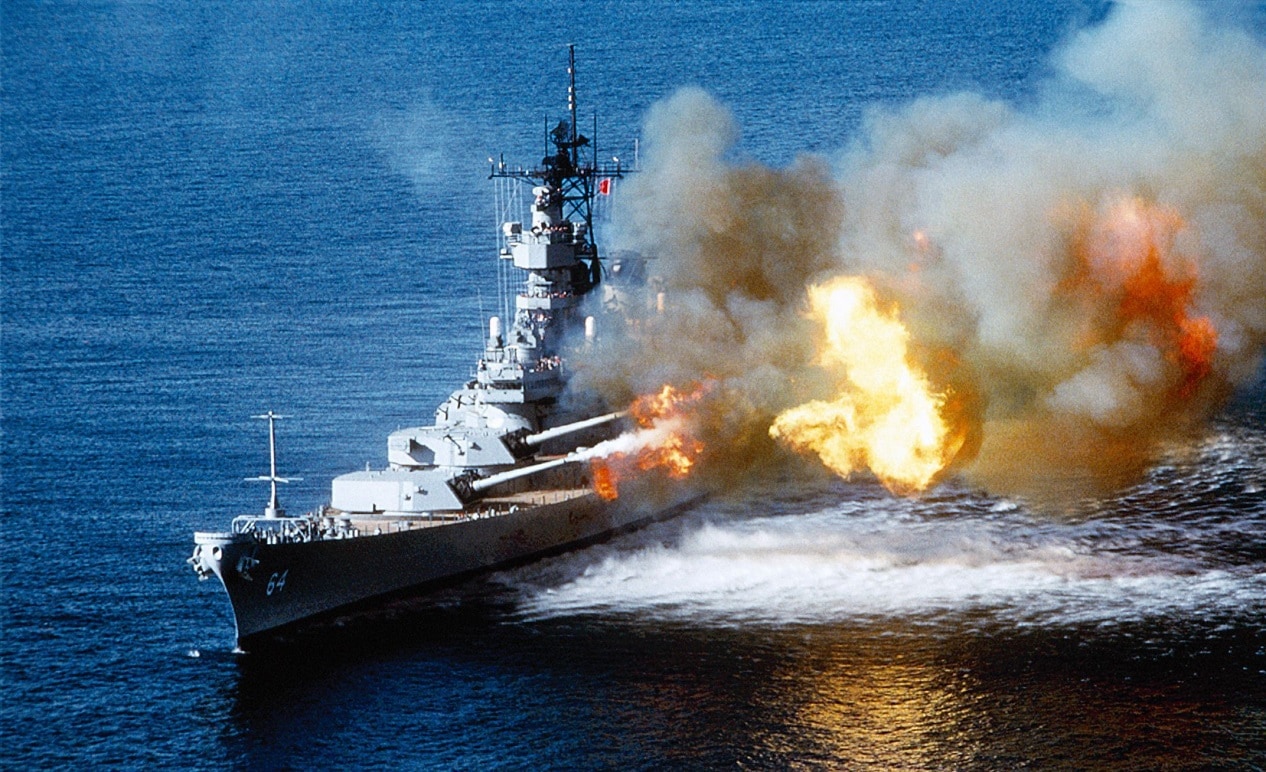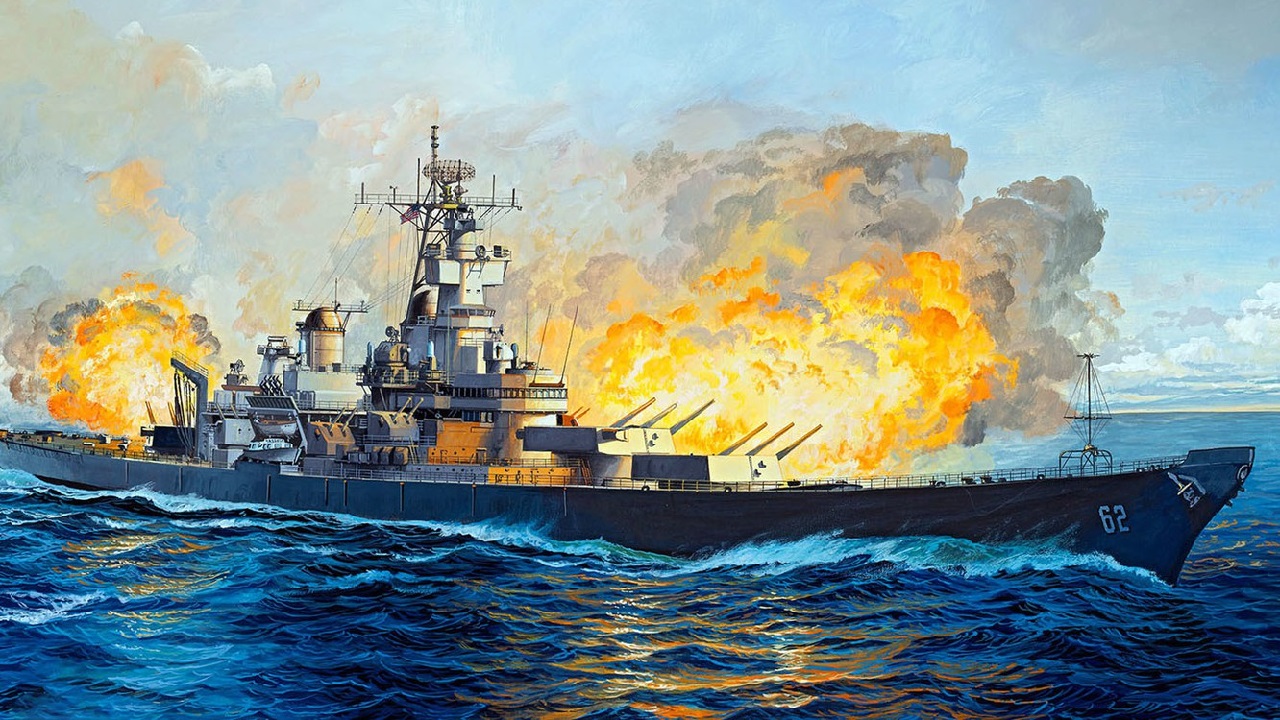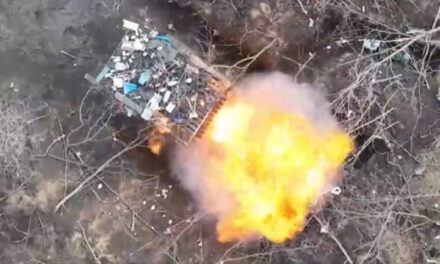We support our Publishers and Content Creators. You can view this story on their website by CLICKING HERE.
Key Points: The idea of reactivating the Iowa-class battleships—notably the USS Iowa, USS New Jersey, USS Missouri, and USS Wisconsin—is often debated, but the obstacles are immense.
-These WWII-era vessels were modernized during the Cold War and performed admirably in Desert Storm.
-However, their reactivation today faces significant challenges: age, high personnel requirements, budget constraints, vulnerability to modern anti-ship missiles, and maintenance hurdles.
-Despite their historical firepower and speed, these battleships are better preserved as museum ships than in combat.
Could the Legendary Iowa-Class Battleships Ever Return to Service?
File this under “You’ve got to be kidding me.” Would the Iowa-class battleship ever be reactivated by the U.S. Navy?
It is difficult to believe this would happen, but some defense wags have been pondering the question of a return to the sea by the beastly warship for quite a few years now.
It’s not likely, but it is fun to speculate about what the Navy would look like with an updated battleship stocked with modern missiles and other armaments.
The heavy ship could bombard the beachhead in an amphibious attack by U.S. Marines, harkening back to the days of World War Two.
But it likely will never happen.
Iowa-Class: Much to Like About the Old Battlewagon
First, recall that the Iowa-class of battleships had a sterling combat record. There were four vessels: the USS Iowa, the USS New Jersey, the USS Missouri, and the USS Wisconsin. The history of the huge warships goes back to their original construction in 1940.
By 1943, they were all in service and could keep up with aircraft carriers and other support ships and bring heavy gunfire to the fight. Indeed, the Iowa-class battlewagons could steam at 33 knots – a speed unheard of in those days for such a big vessel.
USS Iowa (BB-61) fires a full broadside of her nine 16″/50 and six 5″/38 guns during a target exercise near Vieques Island, Puerto Rico (21°N 65°W). Note concussion effects on the water surface, and 16-inch gun barrels in varying degrees of recoil.
Great in World War Two
Iowa and New Jersey soon joined the Pacific Ocean area of operations with the Missouri and Wisconsin in the Atlantic. They soon patrolled East Asia together and stood out for valor in the Battle of the Philippines and the Battle of Okinawa.
But that was it for the Iowa-class in the Second World War. The Japanese surrendered on the Missouri and then they were inactivated with some service during the Korean War.
Cold War Re-boot for the Iowa-class
The Iowa-Class received a new life during the Reagan administration in 1981. It was time for a 600-ship naval build-up to dominate the Soviets. The U.S. Congress joined in and approved ordering the four battleships back to active duty.
The Navy added missiles to the big guns, and the ships became modern weapons trucks with land-attack Tomahawk cruise missiles and anti-ship Harpoons. They received a major rehaul in electronics, radar, and targeting systems.

Iowa-class. Image Credit: Creative Commons.
Plus, the Soviets had their nuclear-powered Kirov-class battlecruisers, which were huge and chock full of weapons with the range to threaten U.S. carriers.
Perhaps it was time for the Iowas to offer their gargantuan fire support and ability to go toe-to-toe with the Russian navy.
Bringing the Noise to the Iraqis
The ships were in service during Operation Desert Storm a decade later and provided shock and awe firepower leading up to and during the allied attack against Saddam Hussein’s forces.
Five Reasons to Say No to Battleships in 2024
That’s a great record, but now what?
Should we even consider that the Iowa-class could come back in service?
First, they are just too old for reactivation. No ship from World War Two should embark on the open seas again.
Second, the personnel needs would be prohibitive. It takes around 1,500 sailors to make the Iowa-class a floating doom-bringer.
Due to current recruiting shortfalls, there are not enough sailors to staff the ships. And one could make the case for using those sailors on new ships instead.
Third, money is always tight. With the vast expense of the new Ford-class carrier, rejuvenating battleships is not in the budget.

Iowa-Class Battleship USS New Jersey. Image Credit: Creative Commons.
Fourth, they have no role in a sea battle in which they could be sunk by Chinese anti-ship missiles. They would need to be equipped by the Aegis Combat System to ward off enemy fire and again that is cost prohibitive and impractical.
Fifth, the Iowa-class would be difficult to maintain. Where would the Navy get spare parts? Where do they dry dock for maintenance?
I could go on, but you get the picture. Let’s put this speculation to bed and consign the battleship for continued public displays as museums. They have no place in modern maritime combat. This seems to be a debate that won’t die because the battleship is a neat historical lesson in the use of overwhelming firepower and the ability to dominate the enemy on the sea and on the shore. But they are just too old to bother with.
About the Author: Dr. Brent M. Eastwood
Brent M. Eastwood, PhD, is the author of Don’t Turn Your Back On the World: a Conservative Foreign Policy and Humans, Machines, and Data: Future Trends in Warfare, plus two other books. Brent was the founder and CEO of a tech firm that predicted world events using artificial intelligence. He served as a legislative fellow for U.S. Senator Tim Scott and advised the senator on defense and foreign policy issues. He has taught at American University, George Washington University, and George Mason University. Brent is a former U.S. Army Infantry officer. He can be followed on X @BMEastwood.

 Conservative
Conservative  Search
Search Trending
Trending Current News
Current News 





